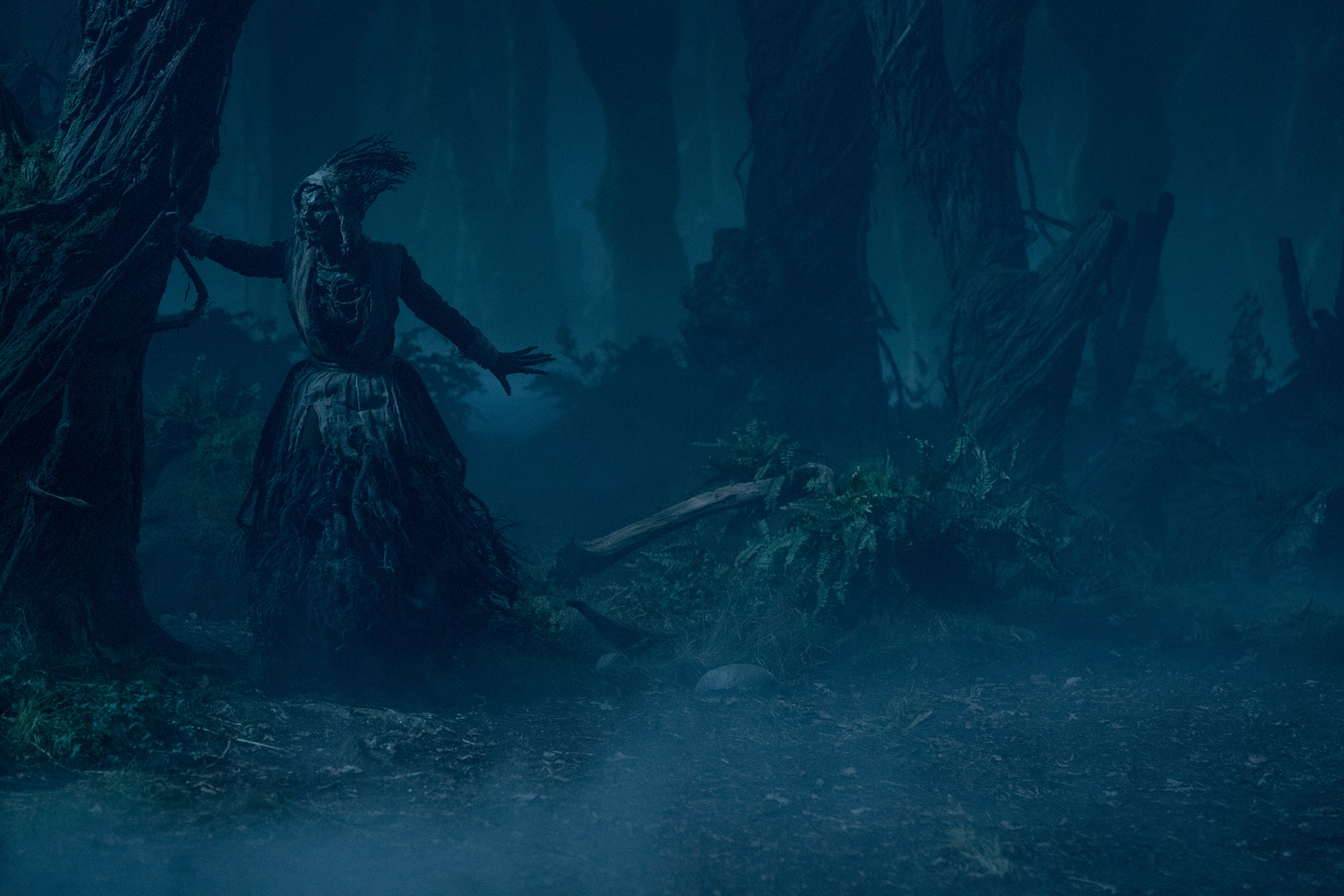There are many creatures throughout the first season of Guillermo del Toro’s Cabinet of Curiosities that will haunt your nightmares. They rise from grimy, dirty pits of the ground or poke out of the shadows after not seeing the sun for years on end. There is something earthy and grounded about the work of Special Makeup Effects Department Head, Sean Sansom, and and Prosthetic Designer, Mike Hill, that feels as if they tapped into the darkest parts of our brains to create creatures we have never seen before.
“It wasn’t about making a spectacle about the monsters,” Hill says. “You weren’t waiting for them to show up as much as they were an actor or character in the story that just happens to be horrific.
It should always be reiterated that Cabinet features eight different stories from eight very different filmmakers. For a lot of artists behind the camera, they worked on most if not all of these episodes. Sansom and Hill didn’t work linearly, and they were oftentimes working on more than one episode at a time,
“The schedule was the most intimidating,” Sansom says. “Mike and I started earlier on–probably five months before things starting shooting–so we knew what we were going to be making. It wasn’t shot in the order of how people saw it. The last episode they aired was the first episode we film. We piggybacked on things and stuff overlapped. While we were filming, because it was COVID, we were on Zoom meetings the entire time.”

“Dreams in the Witch House” is Cabinet’s nominated episode, but they could’ve selected any episode to submit. At the center of “Dream” is Keziah Mason, an executed witch who battles Rupert Grint’s Walter Gilman, and you have never seen a character designed like this before. I openly admitted to Sansom and Hill that I thought Keziah was a product of visual effects trickery, but they built pieces from head to toe, including an elaborate chest plate.
“The makeup was approximately about eight pieces,” says Hill. “If we include the bonnet, it would be nine, because we sculpted that to elongate her head in a regal way. It started from design and then sculpture, that’s how it typically starts. We had to mold the actress’ head and then sculpt features onto that. We pre-painted them and then put twigs on her. Honestly, her look alone is a good six weeks work in prep to get ready. Initially, the rat was supposed to run through her chest, so we made a piece that was hollow. She was meant to be an elemental witch who is part of the forest and part of the earth. We integrated vines, roots, and woodland moss to make it appear that the ground is bleeding onto her.”
“Graveyard Rats” will spook you for its oversized Rat Queen, and it reminded me of when Anjelica Huston’s mask gets ripped off at the end of The Witches. There is something about the bigness of it that is so unsettling. You can stomp out a rat in your kitchen or backyard, but not one that has such royal standing.
“Sean was inside that costume, so he can give you a personal account of what that was like,” Hill says with a laugh.
 “They like to remind me by referencing The Queen Rat since that’s how it was listed on the call sheet,” Sansom shoots back.
“They like to remind me by referencing The Queen Rat since that’s how it was listed on the call sheet,” Sansom shoots back.
“Going into one of those suits is very claustrophobic and very stressful,” Hill reveals. “When we climb into something like that, it can be better than a performer sometimes. We know all the escape routes that a newbie wouldn’t.”
“We know how the suit is made and we know how to manipulate it,” Sansom says. “Sometimes actors an forget they are wearing prosthetics, or sometimes they are worried they are going to ruin a piece.”
“The Outside” is sleek and bright but unsettling for its emphasis of beauty and how we hold up its ideals. The Lotion Woman is alien-like in her smoothness, but globs of lotion slide and drip off of her. Her vacant face could mean that she represents the ugliest parts of us.
“It was a fabricated silicone suit, so the material, by nature, wants to smooth itself out and not leave a texture behind,” Sansom says. “It was David Anderson from AFC Studios designed that went on in pieces, so it was like a pair of pants and a shirt–almost like a spandex outfit. It was coated in the silicone, so they just blended it in her hands and feet with more silicone on her skin and a pullover mask. On the day, they used a tinted methocel which is what we use for slime or drool for different created. They colored it to look like the lotion and it was applied over the top to make it look wet. VFX did some tweaking to the outside to make it look like it was constantly moving.”
What’s astonishing about Cabinet is how cohesive everything comes together. Both the makeup and visual effects teams worked tireless to marry the mediums together, and the result is eight episodes packed with believable terror. Hill hits home how the forms rely on and not fight each other.
“Both techniques work well together if there is good communication,” he says. “The point is to make one cohesive whole so you don’t override the other. You can spot makeup a mile away, and you can spot VFX a mile away. Marrying the two unobscures the other.”
Guillermo del Toro’s Cabinet of Curiosities is streaming now on Netflix.



![Director Guy Nattiv On Striving To Restore the Tainted Legacy of an Israeli Prime Minister in ‘Golda’ [Video]](https://www.awardsdaily.com/wp-content/uploads/2023/08/Screenshot-2023-08-24-at-10.56.04-PM-75x75.png)

![2025 Oscars: Can a Late-Breaker Still Win Best Picture? [POLL]](https://www.awardsdaily.com/wp-content/uploads/2024/10/gladiator-350x250.jpg)
